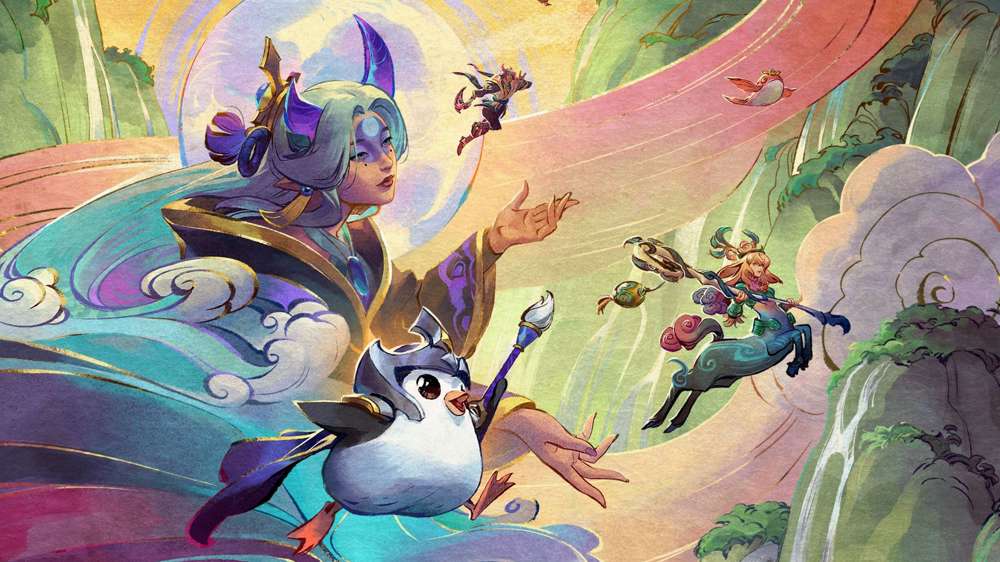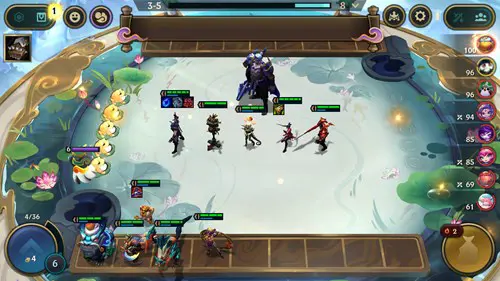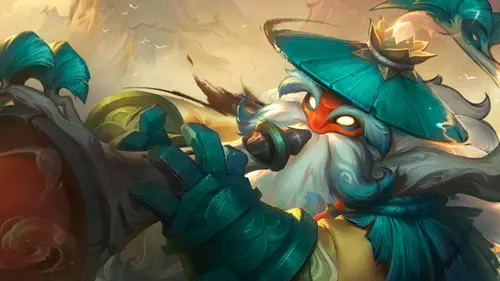TFT Set 11 adds mythological encounters and even more variance
TFT Set 11, Inkborn Fables, is coming, and it's introducing mythological mechanics and bringing back Augments and Portals. Find out more in GGRecon's preview!

Dani Cross
03rd Mar 2024 20:00
Images via Riot Games

The party’s over, and TFT is winding down for the night. That’s the vibe of the Inkborn Fables teaser, and it’s one that feels effortlessly matched by the aesthetic of this mythological new set. The gameplay is far from it though - it’s chaotic and unpredictable, with every game introducing more variables to make each match distinct.
Set 11 is clearly a very pretty one, and it’s easy to see the passion and skill that’s gone into the visuals. After such a heavy focus on music in Set 10, I asked the team if there was a strong desire to put even more into the visual side to differentiate things. While there was a need to mix things up like every set, they didn’t feel like they needed to leave sound design on the backburner. The audio this time is a lot more subtle and peaceful, but it’s still a key part of the set’s theme and tone.
You won't have the addictive bangers from Set 10 though, as this set is all about mythology. A large part of the inspiration behind this set came from the Shan Hai Scrolls skins from League of Legends. These are easily some of the most impressive skins visually, so it’s no surprise they’ve largely inspired a TFT set. The set came together very quickly after the set lead came up with the idea, but that’s not to say it was rushed - it’s carefully crafted and loaded with different gameplay ideas, ranging from the new set mechanic “Encounters” to original Champion designs and more.
Encounters with Mythological Beings

Encounters are essentially a new type of variable, similar to Augments or Portals. They’ll show up at random points within the game and provide different effects for all players.
If you encounter Ornn, you might receive a sudden surge of artefacts for one round only. If Hwei appears at the start of the game, all players get one of their shop slots replaced by one that always gives them traits they already have on the board.
The randomness is something we’ve all come to expect from TFT, but it’s nice that these effects apply to all players. Some Encounters are particularly game-changing too. When Kayn appears, the game is destined to end early. He slashes through everyone from lowest HP to highest, leaving only the healthiest player standing.
That means games can get pretty wild, but it’s usually not so drastically different from regular TFT. Augments and Portals remain, as they’ve become fan-favourite mechanics over the past few sets. It’s unlikely these features will ever be removed from the game at this point. Encounters feel like a good evolution for TFT, though it’s a little strange that these mythological beings we’re encountering are just the same as the units in the set.
New Faces

My favourite unit from my preview of the set has to be Bard. He’s a meep-throwing machine gun, and it’s pretty amusing to watch him decimate entire teams.
The Legendary units are pretty impressive too, like Irelia and her projectile blades. Hwei can paint copies of your allies, turning your bench into a canvas for cool late-game boards. You can even grab Xayah and Rakan as a single unit, and where you place them determines which unit shows up. Xayah is the backline carry while Rakan starts in the front, and their partner will give a buff from the sidelines depending on who’s active.
Kobuko is another interesting design - he’s an entirely original character, a rarity in TFT, and he gains permanent health whenever you earn gold from interest. You can start stacking right from the start of the game, and he’s also part of the returning Fortune trait - an old favourite for many players.
Overall, I love what the team has done with units in this set. Some sets have lacked exciting unit design, but Inkborn Fables seems like a solid mix of tried-and-tested designs and fun new mechanics.
Familiar Fantasy

The skins chosen for this set’s units all feel very thematic, and they’re all pretty beautiful. However, it can be tough to tell who’s who at a glance.
Visual clarity has always been a concern when sets stray further from the classic League of Legends skins. A lot of paid skins in LoL are pretty homogenous, but these are where the more fantastical TFT sets draw their units from. Characters with different origins end up with similar aesthetics as a result. Then there are the skin splash arts where different characters have similar faces. When translated to TFT, it’s difficult to make out which Champion you’re looking at when hovering over traits to see which units you need to add.
It’s not a deal-breaker, and anyone who’s played the majority of TFT sets has run into a set like this before. It just requires more time with the game before you can decipher each unit, which might be a turn-off to some casual players. Despite a decade of playing LoL and TFT on and off, I had trouble quickly identifying Champions - I could've sworn Sivir was actually Sona.
These small issues aside, Inkborn Fables is already shaping up to be one of the better TFT sets, which is impressive after how great Remix Rumble was. The team is really on a hot streak right now, and seems to have settled into a groove across the last few sets. It remains to be seen how Encounters will shape the eventual meta, but there’s more than enough here to get excited if you’re a fan of the game.

About The Author
Dani Cross
Dani is a Guides Writer for GGRecon. She graduated from university with a degree in Broadcast Journalism, then worked as a freelance writer before joining the GGRecon team as a full-time writer in 2023. In her opinion, the best game of all time is Elden Ring – but her favourite is Halo: Reach, a game that created lifelong friendships and somehow started her down the path to a career in media. She’s also way too invested in Pokemon cards, and a big fan of guinea pigs, cats and other cute creatures.